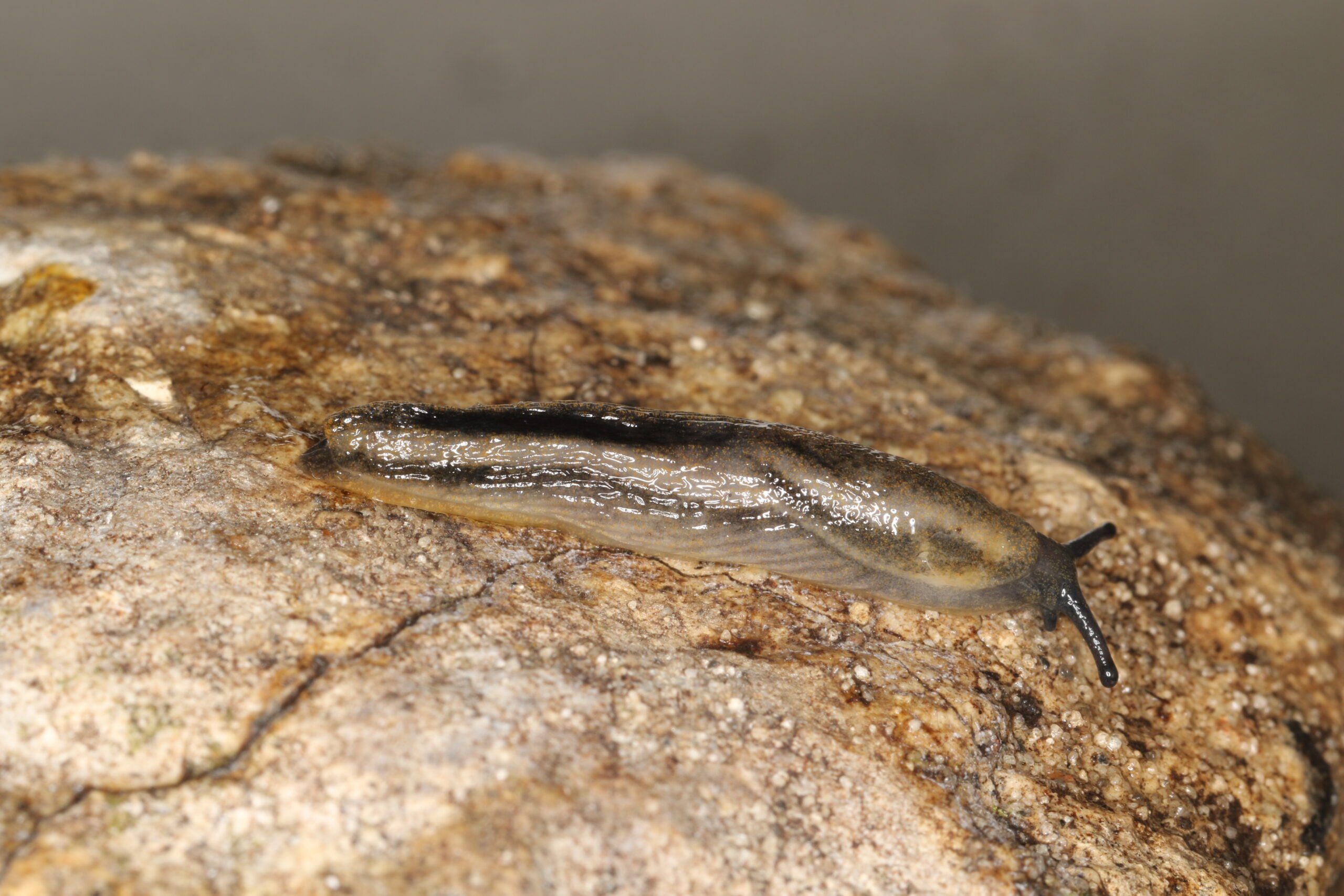Slug is the common name for gastropod molluscs that have little to no shell. Descended from snails, they usually have a vestigial shell that is internalised, but some have either none at all or a very reduced one, such as the shelled slug (Testacella scutulum), which has a fingernail-like shell over its rear end. There are over 30 species of slug in the UK.
As they do not have full-sized shells, they’re prone to desiccation, so many species are most active during and after wet weather and spend drier times hidden in damp places such as under man-made structures, tree bark, leaf litter and rocks. They play an essential role in the ecosystem, similarly to snails, by eating decaying matter such as plant material and fungi, aiding nutrient cycling.
A small number of slugs are considered serious pests to agriculture and horticulture, eating foliage, fruits, and vegetables. This gave rise to the widespread use of toxic slug killing chemicals, which often impacted other non-target species. Recently, however, the use of iron phosphate baits has emerged, as they are less harmful to other wildlife.
Black Slug (Arion ater)

Distribution: Extremely common and widespread throughout Britain.
What to look for: These species are large and vary widely in colour, including black, brown, grey, orange, reddish and green. It has long, coarse tubercles, the raised areas between the grooves on its skin, found on its side and back. Black slugs also have a pneumostome, a breathing hole, on the right side of their mantle, a protective structure of calcareous granules, through which they breathe.
Common Garden slug (Arion distinctus)

Distribution: Widespread.
What to look for: A dark or bluish-grey with dark lateral stripes and a pale yellow or orange sole (underside), with a characteristic yellow-orange mucus and no keel. This species also has tiny gold speckles on its tubercles, which are best seen through a hand lens.
Netted slug (Deroceras reticulatum)

Distribution: Widespread.
What to look for: This may be the most common slug across the UK. It is a pale, off-white colour, with a keel at the tip of its tail and a mantle that is roughly half the length of its body. It has a chunky build and the tubercles are pale than the rest of its skin, giving it a netted appearance.
Western Dusky slug (Arion subfuscus)

Distribution: Widespread, but less common in East Anglia.
What to look for: The dusky slug has various colour forms of yellow and brown. An important feature is the orange body mucus which stains on contact with your skin. It also usually has two dark lateral stripes and a pale sole with a fringe that blends in with the body.
Hedgehog slug (Arion intermedius)

Distribution: Widespread but not common.
What to look for: This is a small slug, at only 15–22mm when extended, and is usually pale brown with a darker lateral stripe along its body to the mantle. Its sole is pale yellow and it has coarse tubercles that can contract to ragged points, giving it the reason for its name.
Leopard slug (Limax maximus)

Distribution: Widespread.
What to look for: The appearance of the leopard slug is quite variable but it usually has a pale background and distinctive dark spots and markings that resemble leopard spots. The markings on its back are usually arranged in three longitudinal bands and it has a pale sole.
Yellow slug (Limax flavus)

Distribution: Found mainly in England and Wales.
What to look for: The yellow slug is usually a bright, lemon yellow with darker markings, with blue tentacles and a yellow line along the keel which extends from the tail to approximately halfway along its body. This central line can sometimes be broken into dashes.
Green Cellar Slug / Irish Yellow Slug (Limacus maculatus)

Distribution: Introduced population with a spreading range across the UK, less common in Scotland.
What to look for: This species can vary from green to dull yellow with dark markings, grey tentacles and a colourless to orange slime. It can also occasionally have a yellow stripe at the tail end that doesn’t reach more than halfway along its body.
Recommended Reading:
 Slugs of Britain and Ireland: Identification, Understanding and Control Paperback | Feb 2014
Slugs of Britain and Ireland: Identification, Understanding and Control Paperback | Feb 2014
This richly illustrated guide provides a comprehensive, picture-based identification charts and species accounts for 46 slug and semi-slug species known in Britain and Ireland.
 Slugs and Snails Hardback | December 2016
Slugs and Snails Hardback | December 2016
In this long-awaited New Naturalist volume, Robert Cameron introduces gastropods, sharing the comprehensive natural history of slugs and snails of the British Isles specifically.
Opticron Hand Lens 23mm 10x Magnification
Perfect for fieldwork, this general-purpose hand lens is ideal for observing insects.
Sterile, screw-on sampling containers ideal for viewing insects in the field.



 180ml Collecting Pot
180ml Collecting Pot